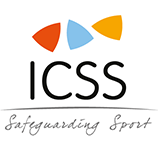Feature Standards Needed for Education & Training
Applying an international standard for educating and training safety and security staff is vital to avoid repeating past incidents, argues Helmut Spahn.
In March, the current inquest into the Hillsborough football stadium disaster of 1989 heard from the police match commander on the day, former Chief Superintendent David Duckenfield. He told the inquest jury that he ”was probably not the best man for the job on the day… [and] with hindsight, I should have thought about my limited knowledge of the role of a commander in a major event that was an all-ticket sell-out, when I had not been responsible, or in that responsible position, previously.
During testimony, Duckenfield said he was unaware of the crowd capacities at Hillsborough, which were set out in the safety certificate; he failed to recognise the risk of overcrowding caused by the pens at the Leppings Lane terraces; that he ”should have been more flexible†about the possibility of starting kick-off late; and conceded that operational police orders placed ”more emphasis on preventing disorder than public safety.
Duckenfield also confirmed that he was familiar with the Green Guide, the government-issued sports ground safety manual, adding that he ”had knowledge of South Yorkshire Police’s major incident plan, but not the codeword to initiate it.
Since the tragic events of 26 years ago in Sheffield, there have been massive improvements in safety and security management in the United Kingdom, but as I see the situation worldwide, there remains a stark lack of professional training and education to prepare club officials, police, and other emergency services.
Specifically, it is a commonly acknowledged international standard for safety and security that is missing. Between countries, there are huge variations in officials’ experience with hosting major sport events or high-level competitions.
There is never one overarching concept that can be applied to ensure safety at an event: tailor-made approaches are required in every single case, as can be seen in the detail of the Hillsborough testimony. But it is possible to inculcate some common standards based upon a robust education and training concept. It could prepare safety and security related personnel for relevant tasks, and clarify roles and responsibilities, as well as policies and organisational structures, effectively ensuring that they are properly prepared to make effective preparations for an event.
Basically, one cannot expect to get trained stewards or security personnel or match commanders if the corresponding educational structures do not exist. In many countries, no officially adopted certification scheme is in place to indicate a person’s capabilities, or even any regulations clearly listing the training requirements.
Countries such as the UK and Germany now have clear legislation for the training and certification of stewards or private security personnel put in place, but this is only one part of a holistic approach, and incidents still happen, as seen during the recent pitch invasion at a match between West Bromwich Albion and Aston Villa football clubs in the UK. Safety and security education must be implemented for every relevant stakeholder, including league officials, club management and venue operators, so they can understand underlying principles, challenges and fundamental approaches to integrate safety and security considerations into their plans. They are both cross-functional tasks, which cannot be delivered by only one functional area in the entire event construct.
Read more at the ICSS Journal here

